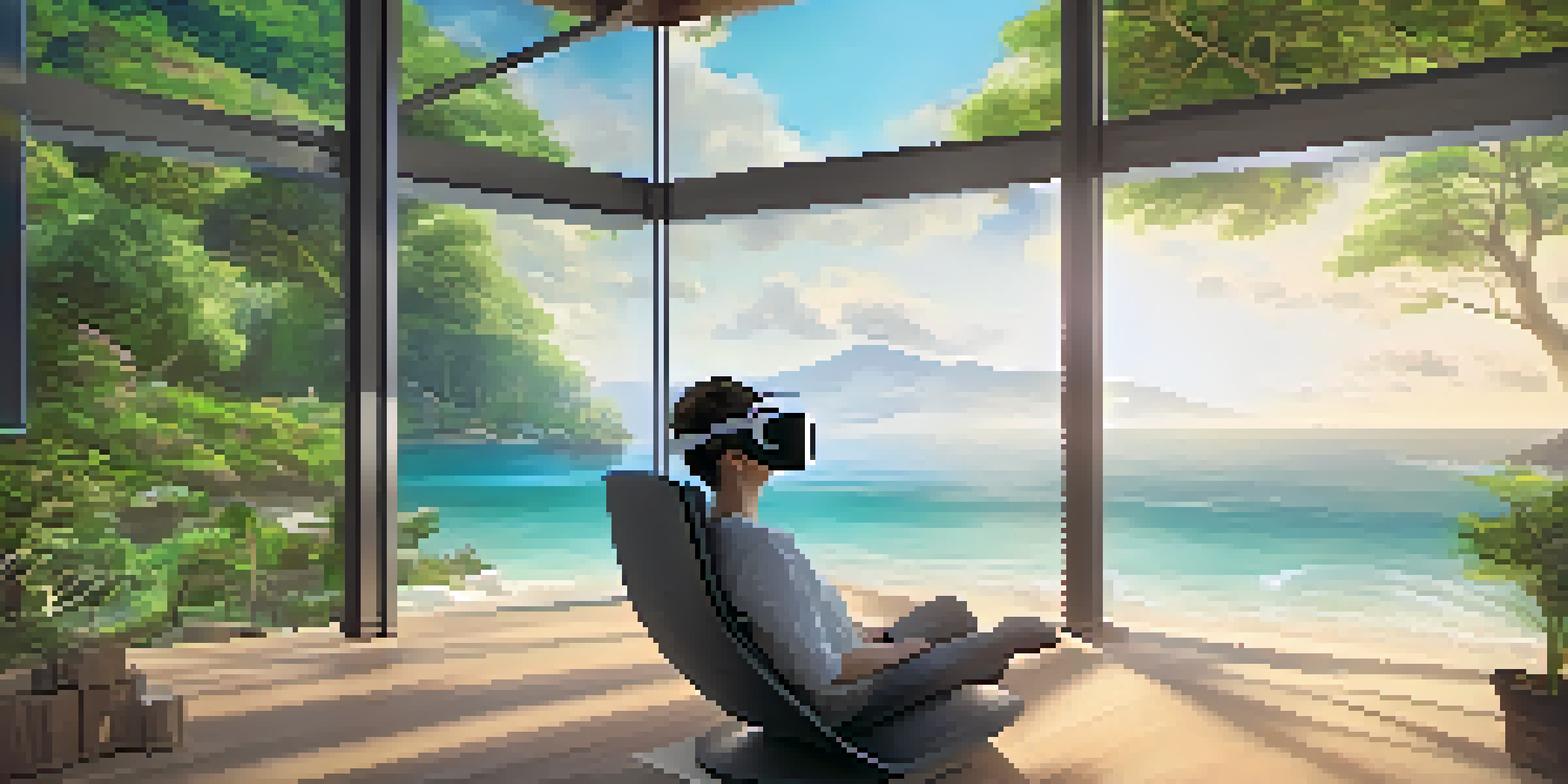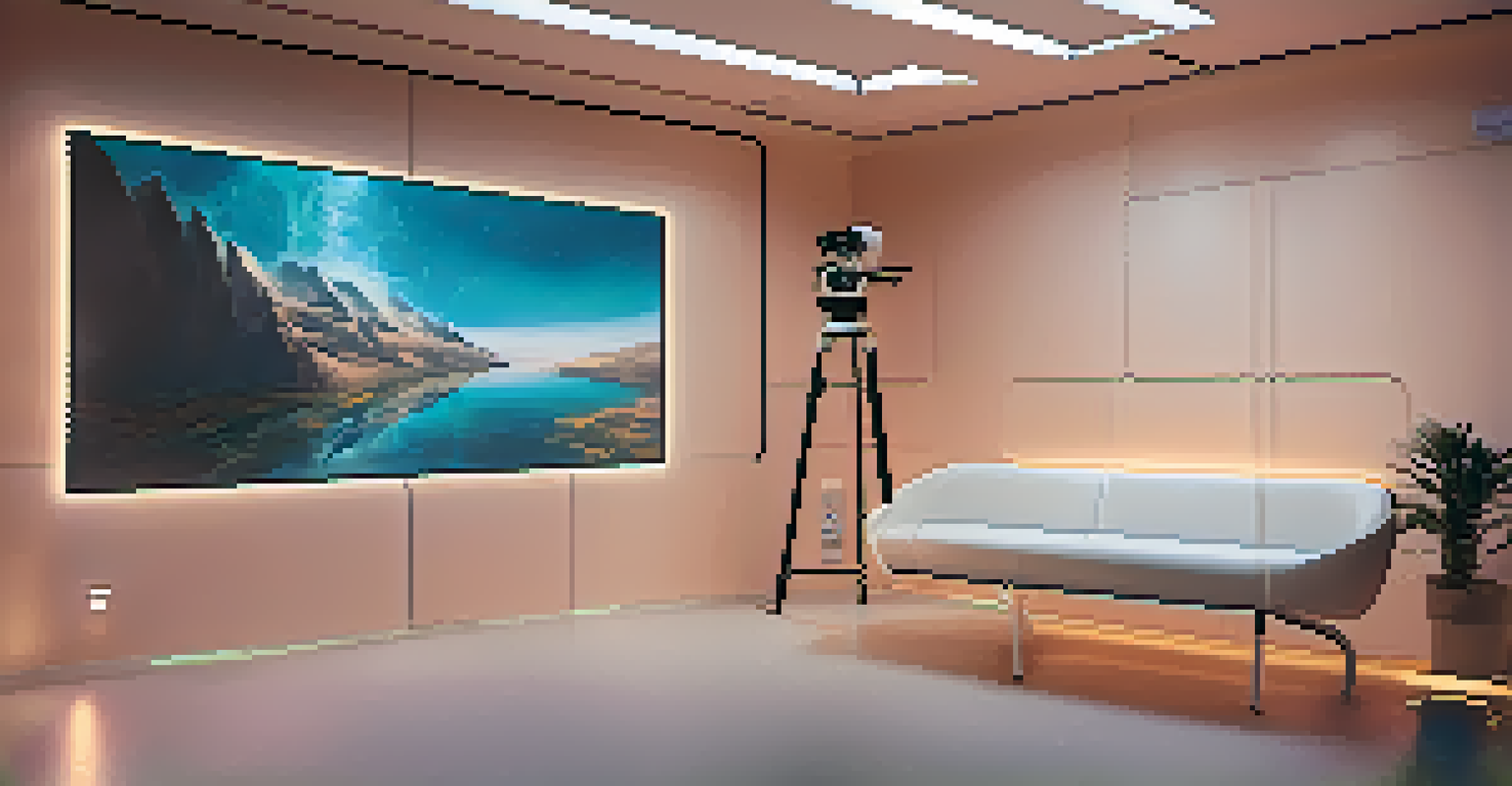Virtual Reality Therapy: Innovations in Mental Health Treatment

Understanding Virtual Reality Therapy and Its Benefits
Virtual Reality Therapy (VRT) uses immersive technology to create simulated environments for therapeutic purposes. This innovative approach can help individuals confront fears, manage anxiety, and improve overall mental health. By placing patients in controlled virtual settings, therapists can guide them through experiences that would be difficult or impossible in real life.
Virtual reality is the most immersive form of interaction that we have ever known.
One significant benefit of VRT is its ability to provide exposure therapy in a safe space. For example, a person with a fear of flying can experience a virtual flight, allowing them to face their fear under professional guidance. This controlled exposure often leads to quicker results and helps build confidence in real-world situations.
Moreover, VRT has been shown to enhance engagement in therapy sessions. Patients often find traditional methods less stimulating, but the interactive nature of virtual reality can make the process more enjoyable. This engagement can lead to increased adherence to treatment plans and, ultimately, better mental health outcomes.
Innovative Applications of Virtual Reality in Therapy
VRT is being utilized in various therapeutic contexts, from treating PTSD to managing chronic pain. For instance, veterans with PTSD can relive traumatic experiences in a controlled virtual world, allowing therapists to help them process these events effectively. This application has shown promising results, with many patients reporting significant reductions in symptoms.

Another exciting application is in the realm of anxiety disorders. Virtual environments can simulate social situations, enabling patients to practice social skills and reduce anxiety in a low-stakes setting. This method not only prepares them for real-life interactions but also helps desensitize them to their fears gradually.
VRT Enhances Exposure Therapy
Virtual Reality Therapy provides a safe environment for patients to confront fears and anxieties under professional guidance.
Additionally, VRT can assist in treating phobias, such as fear of heights or spiders. By gradually exposing patients to their fears in a virtual space, therapists can help them learn coping mechanisms. This method is often more effective than traditional techniques, leading to faster progress and improved quality of life.
The Role of Technology in Advancing VRT
As technology continues to evolve, so does the potential for Virtual Reality Therapy. Advancements in hardware, such as lighter headsets and more realistic graphics, enhance the immersive experience for patients. This improved realism helps individuals engage more deeply with their therapy, making it a more effective tool for treatment.
The future is already here – it's just not very evenly distributed.
Moreover, software development plays a crucial role in creating tailored therapeutic experiences. Developers are now collaborating with mental health professionals to design programs that cater to specific disorders, ensuring that therapists have the right tools to support their patients. This collaboration fosters an environment where therapy and technology work hand in hand.
The integration of artificial intelligence (AI) within VR applications is another exciting frontier. AI can help personalize therapy sessions based on a patient's progress and emotional responses, making treatment even more effective. As these technologies improve, we can expect a more refined approach to mental health treatment through VRT.
Challenges and Ethical Considerations in VRT
Despite its potential, Virtual Reality Therapy is not without challenges. One primary concern is the accessibility of the technology. Many patients may not have access to high-quality VR equipment or the internet, which can create disparities in treatment availability. Ensuring that VRT is accessible to everyone is crucial for its widespread adoption.
Another challenge lies in the training of therapists. While VRT can be an effective tool, therapists must be adequately trained to use the technology and integrate it into their practice. This need for specialized training can be a barrier to implementation, as not all mental health professionals may have the resources or time to invest in learning these new techniques.
Technology Boosts VRT Effectiveness
Advancements in VR technology and software development are creating tailored therapeutic experiences that improve patient engagement.
Ethical considerations also come into play, particularly regarding patient data and privacy. As with any digital health tool, ensuring that patient information is secure and used responsibly is paramount. Establishing clear guidelines and protocols will be essential as VRT continues to evolve within the mental health landscape.
Success Stories: Real-Life Impact of VRT
Numerous success stories highlight the transformative power of Virtual Reality Therapy in mental health treatment. For example, patients with severe anxiety have reported significant improvements after undergoing VRT sessions. These real-life accounts not only showcase the effectiveness of the approach but also inspire hope for others facing similar challenges.
One particularly moving story involves a young woman who struggled with social anxiety for years. After participating in a VRT program that simulated social interactions, she gradually built confidence and started forming real-life connections. Her journey demonstrates how VRT can facilitate profound changes in a person's life.
Such success stories are becoming increasingly common as more mental health professionals adopt VRT into their practices. Sharing these experiences helps to raise awareness about the benefits of this innovative therapy and encourages others to seek help, knowing that effective treatment options are available.
The Future of Virtual Reality Therapy in Mental Health
Looking ahead, the future of Virtual Reality Therapy appears promising. As technology continues to advance, we can expect even more innovative applications for mental health treatment. This progression may lead to more personalized and effective therapies, catering to individual needs while addressing various mental health disorders.
Moreover, ongoing research will likely uncover new ways to enhance the effectiveness of VRT. By studying the long-term impacts of virtual reality on mental health, researchers can refine techniques and develop best practices for therapists. This knowledge will contribute to the growth and acceptance of VRT as a standard treatment option.
Accessibility and Training Challenges
Despite its benefits, VRT faces challenges related to technology accessibility and the need for specialized training for therapists.
As awareness of mental health issues continues to rise, the demand for effective therapies will grow. Virtual Reality Therapy stands at the forefront of this movement, offering a unique and engaging approach to treatment. With continued innovation and collaboration, VRT is set to play a significant role in shaping the future of mental health care.
How to Get Started with Virtual Reality Therapy
If you're considering Virtual Reality Therapy, the first step is to consult with a mental health professional experienced in this area. They can evaluate your specific needs and determine if VRT is a suitable option for you. A qualified therapist will guide you through the process and help you understand what to expect during treatment.
Next, research local clinics or therapists that offer VRT. Many mental health facilities are beginning to incorporate this innovative approach into their practices. Finding a provider with experience in VRT ensures that you receive the best possible care tailored to your needs.

Finally, be open to the experience. Virtual Reality Therapy may feel different at first, but embracing the technology can lead to significant breakthroughs in your mental health journey. Remember that every step you take toward understanding and overcoming your challenges is a step toward a brighter future.